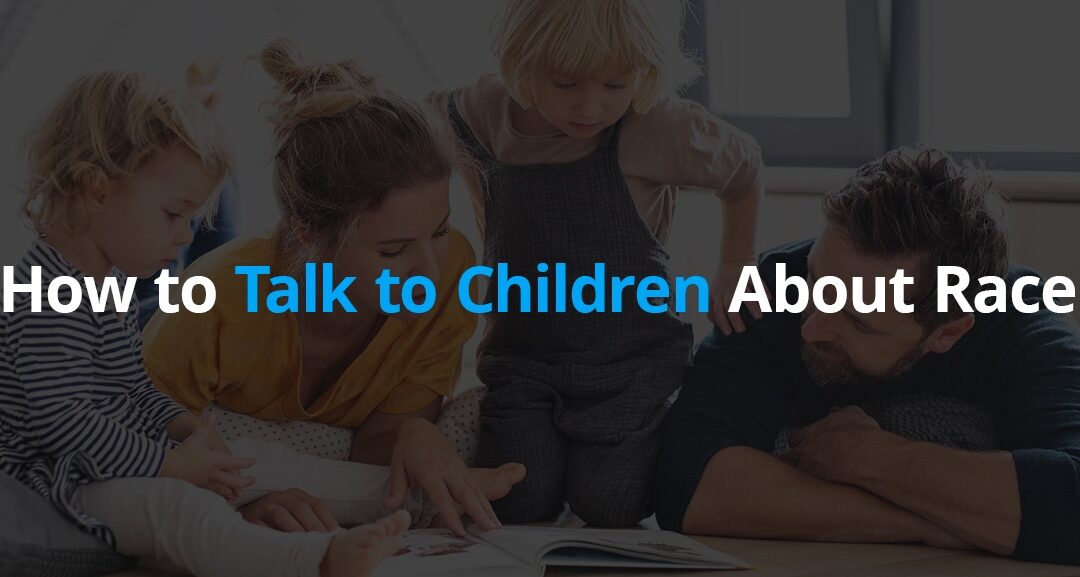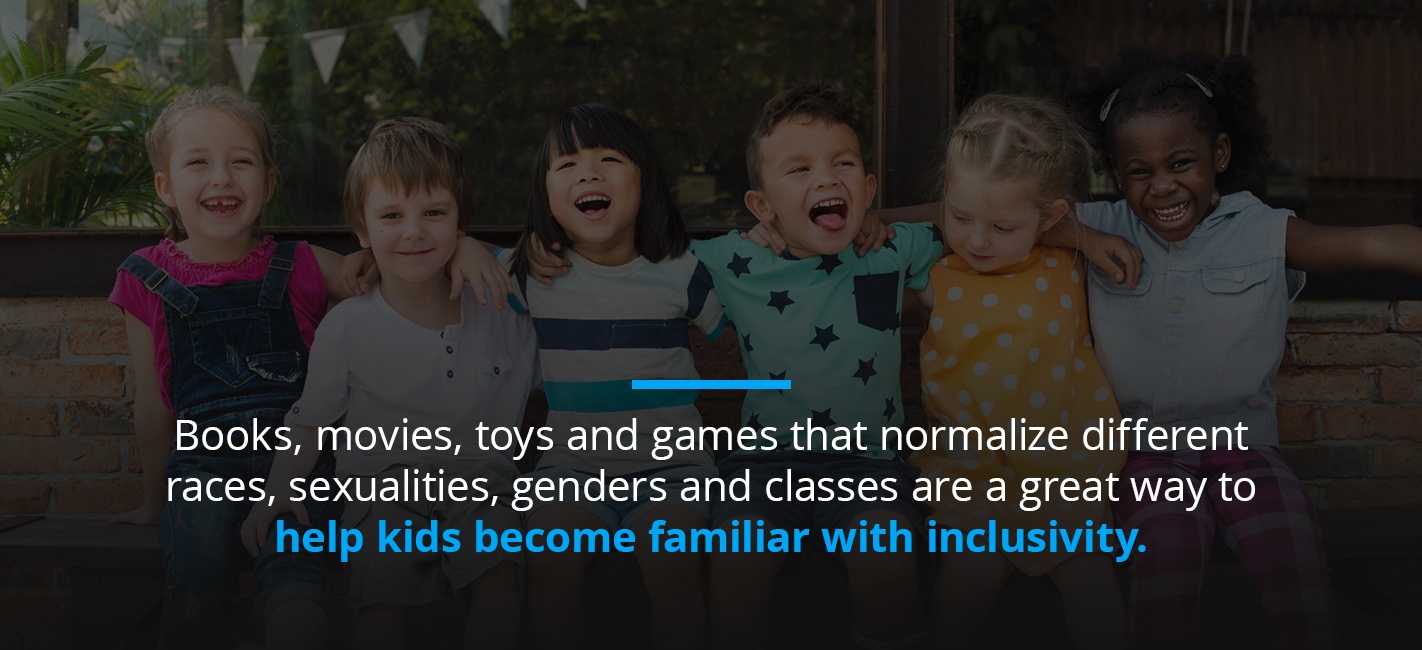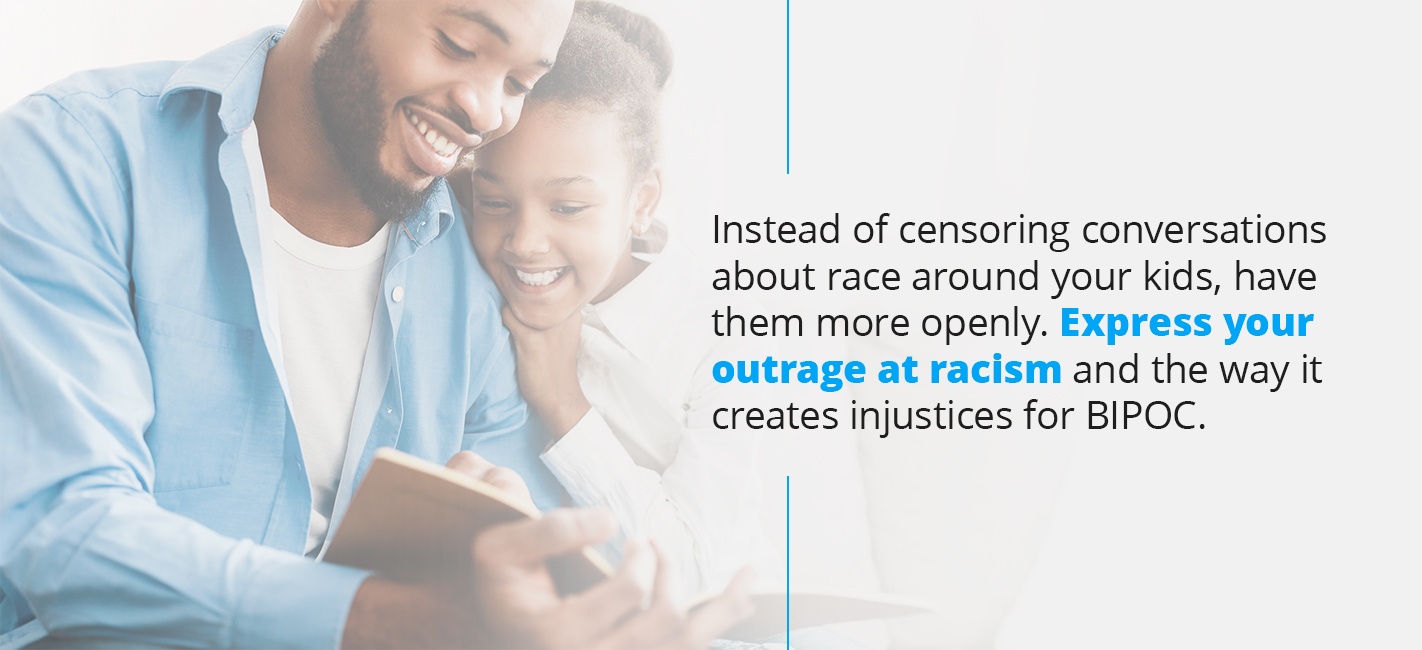Racism is a hot topic throughout the world nowadays and for good reason. It can be a complicated concept that’s hard to define accurately. In fact, many people believe the dictionary definition of racism is inaccurate since the dictionary often cannot keep up with the natural evolution of language. All this can make racism more difficult to understand, but this understanding is crucial in order to take action against racism. Children are more likely to follow after the people they look up to, and if those people are voicing opinions that are racist, children will naturally follow. That’s why it’s important to talk to your child about racism, regardless of whether you’re white, Black, Indigenous or another racial minority. How do you talk to a child about racial bias and privilege? The conversation begins with you — the parents or primary caregivers.
How to Raise an Anti-Racist Kid
Children are able to distinguish people of different races when they’re only six months old. By the time they’re eight, they are able to sort people in groups by their race. Though kids are able to see what’s obvious — different skin colors and other physical features common among certain ethnicities — it doesn’t mean they know how to think critically about race and its place in the world. No one wants to learn that they’ve done or said something racist. But racism is so deeply ingrained and has so many layers to it that every human being has some level of racial bias. The goal is to acknowledge these traits and actively work to unlearn them. Only by becoming cognizant of racism’s place in our world will we be able to successfully raise anti-racist children. Here are five tips for teaching kids about racism:
1. Educate Yourself First
No matter your race, it’s wise to do some research and educate yourself about racism. Racism often considers whiteness to be a symbol of superiority, but that doesn’t just mean white people. It also means Black, Indigenous and people of color (BIPOC) with lighter skin are often considered superior to those with darker skin tones. Understanding the difference between racism and colorism is crucial, especially if you or your children are BIPOC. Another aspect of educating yourself about racism is becoming comfortable with the concept. Some parents are nervous talking to their children about racism because they think kids aren’t old enough for the concept. But since infants can differentiate between skin colors and children quickly pick up on racist ideologies when they hear them growing up, it’s never too early to start teaching children about diversity.
2. Encourage Diversity
Often, ignorance is the root of racism — that is, misinformation and generalizations about certain races and ethnicities. There are many resources for parents about racism that tackle how to encourage diversity in your kids’ lives. The simplest way is by consuming art and media created by and centering on BIPOC. Books, movies, toys and games that normalize different races, sexualities, genders and classes are a great way to help kids become familiar with inclusivity. Encouraging diversity in children also involves ensuring they’re exposed to a range of people in their lives. This doesn’t mean just making sure your kids have a diverse group of friends — although that’s important too. It means talking openly and honestly about human differences, including race, wealth, sexuality and ability. Help your kids understand that people come in different shapes and sizes, which is great, but that some people use these unique differences to put others down, which is not right.
3. Go Slowly
You don’t have to bombard your children with all the facts and figures in one sitting. Raising children who are anti-racist is an ongoing job, and you should keep your child’s level of comprehension in mind when introducing and expanding on these topics. There are several children’s books about race that are designed to help introduce complicated concepts in a way children will understand. Read these books together with your children to spur discussions about the characters and their conflicts. Children are inherently curious and will likely ask you questions, which creates great learning opportunities. When children notice unfamiliar events in the world around them, like protests, they will likely have questions about why they’re happening. Use this curiosity as a way to help children become cognizant of how people are treated differently based on their skin color, gender or sexuality.
4. Focus on Action
Knowing how to be anti-racist is one thing, but actions speak louder than words. Educating your children about peer pressure and bullying — and providing them with the tools to confidently stand up to both — is one of the best ways to help children learn to fight injustice alongside someone who may not be able to stand up for themselves. Help your children understand how they can stand up against racism and why it’s important to do so. When discussing anti-racism, make sure kids understand there are a variety of ways to take action against racism. Donating their allowance, volunteering and speaking up for a friend are all ways they can contribute to the fight to end racism, and each contribution is important.
5. Teach by Doing
We’ve already mentioned how children are more likely to imitate the people they admire, which means it’s your responsibility to ensure you practice what you preach. Call out offensive comments or words when you hear them, and be cognizant of what you say and how you treat or act around people of different races. You may think they don’t notice, but children are more observant than you realize. Instead of censoring conversations about race around your kids, have them more openly. Express your outrage at racism and the way it creates injustices for BIPOC. Talk about how and why these injustices continue, as well as how people can use their privilege to help break the cycle.
Improve Yourself to Improve the Future
Children are the future, and in these uncertain and tumultuous times, we need children to grow up aware of the unfairness in the world. In order to do that, we need to unlearn our own ingrained “-isms” — something that can be a challenging process. At Merrimack Valley Psychological Associates, our goal is to help individuals and families improve themselves. Our caring, compassionate team of professionals offers in-person and teleconference therapy to help you improve your quality of life. For more information on our services or to book an appointment, get in touch by calling us at 978-482-7351.
Reviewed By
Dr. David Rainen, PsyD.
I am a licensed clinical psychologist with an extensive background treating a variety of different ages, situations, emotional and mental health disorders in individuals and their families. As part of my 10 year professional and training career in psychology, I have developed and refined my skills and approaches through my work in a variety of diverse settings including: hospitals, community outpatient facilities, college counseling centers, secure and unsecure inpatient/residential treatment programs, and therapeutic day schools.




